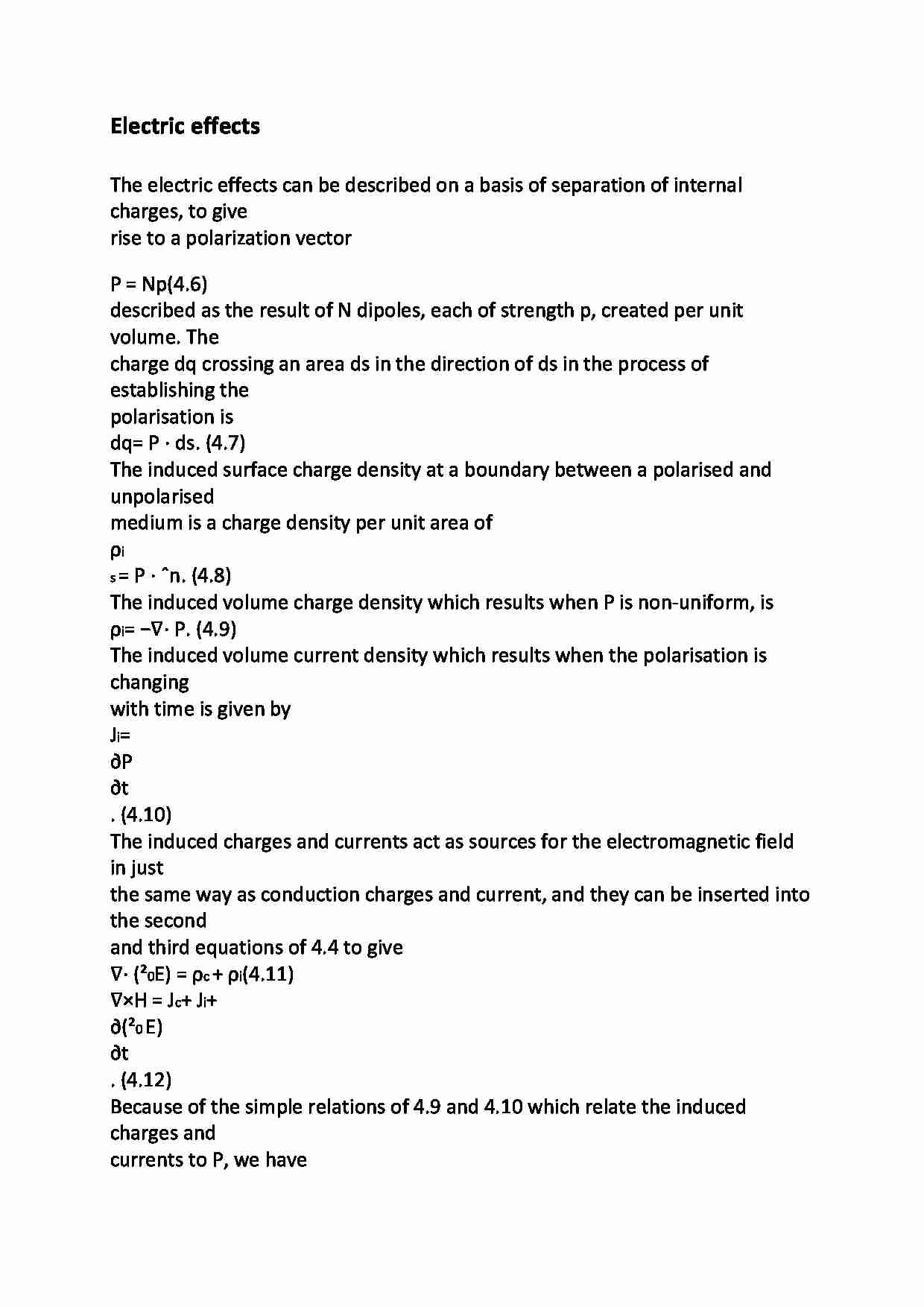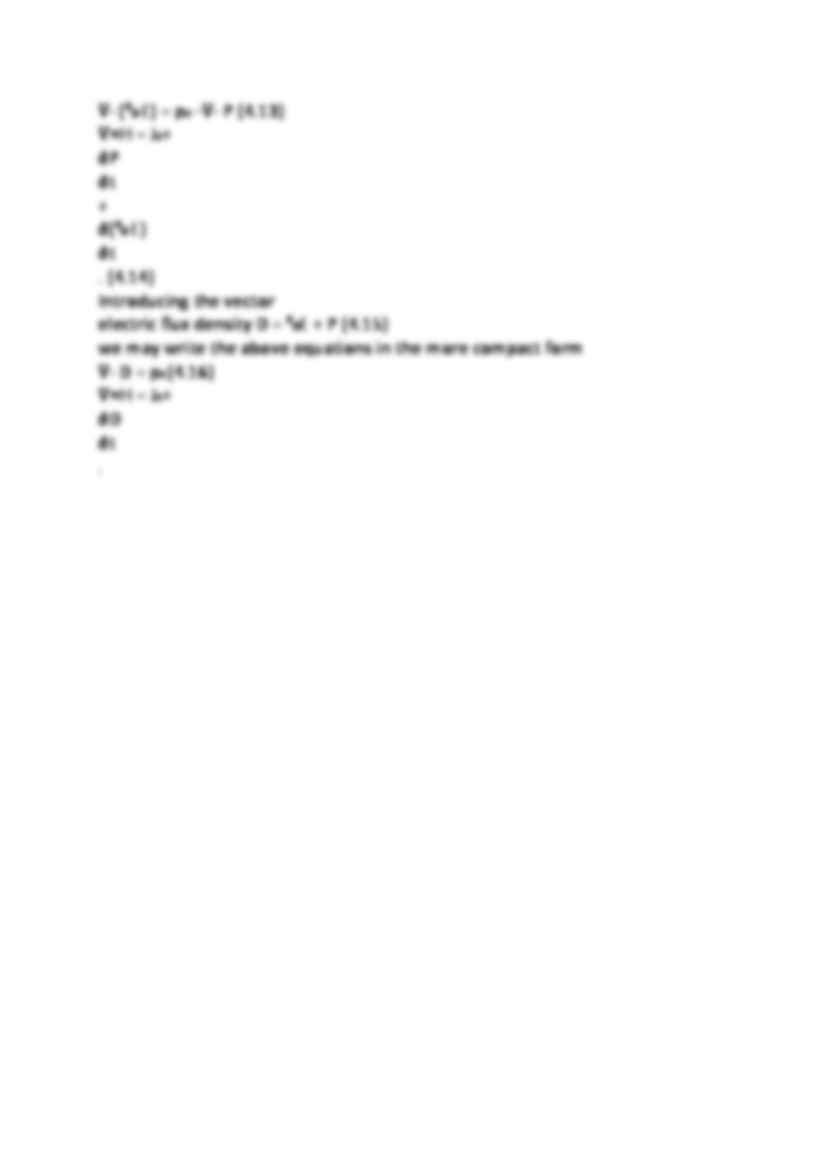To tylko jedna z 2 stron tej notatki. Zaloguj się aby zobaczyć ten dokument.
Zobacz
całą notatkę


Electric e ff ects The electric effects can be described on a basis of separation of internal charges, to give
rise to a polarization vector
P = Np (4.6)
described as the result of N dipoles, each of strength p, created per unit volume. The
charge dq crossing an area ds in the direction of ds in the process of establishing the
polarisation is
dq = P · ds. (4.7)
The induced surface charge density at a boundary between a polarised and unpolarised
medium is a charge density per unit area of
ρi
s = P · ˆn. (4.8)
The induced volume charge density which results when P is non-uniform, is
ρi = −∇ · P. (4.9)
The induced volume current density which results when the polarisation is changing
with time is given by
Ji =
∂P
∂t
. (4.10)
The induced charges and currents act as sources for the electromagnetic field in just
the same way as conduction charges and current, and they can be inserted into the second
and third equations of 4.4 to give
∇ · (²0E) = ρc + ρi (4.11)
∇ ×H = Jc + Ji +
∂(²0 E)
∂t
. (4.12)
Because of the simple relations of 4.9 and 4.10 which relate the induced charges and
currents to P, we have
∇ · (²0 E) = ρc −∇· P (4.13)
∇ ×H = Jc +
∂P
∂t
+
∂(²0 E)
∂t
. (4.14)
Introducing the vector
electric flux density D = ²0E + P (4.15)
we may write the above equations in the more compact form
∇ · D = ρc (4.16)
∇ ×H = Jc +
∂D
∂t
.
... zobacz całą notatkę




Komentarze użytkowników (0)